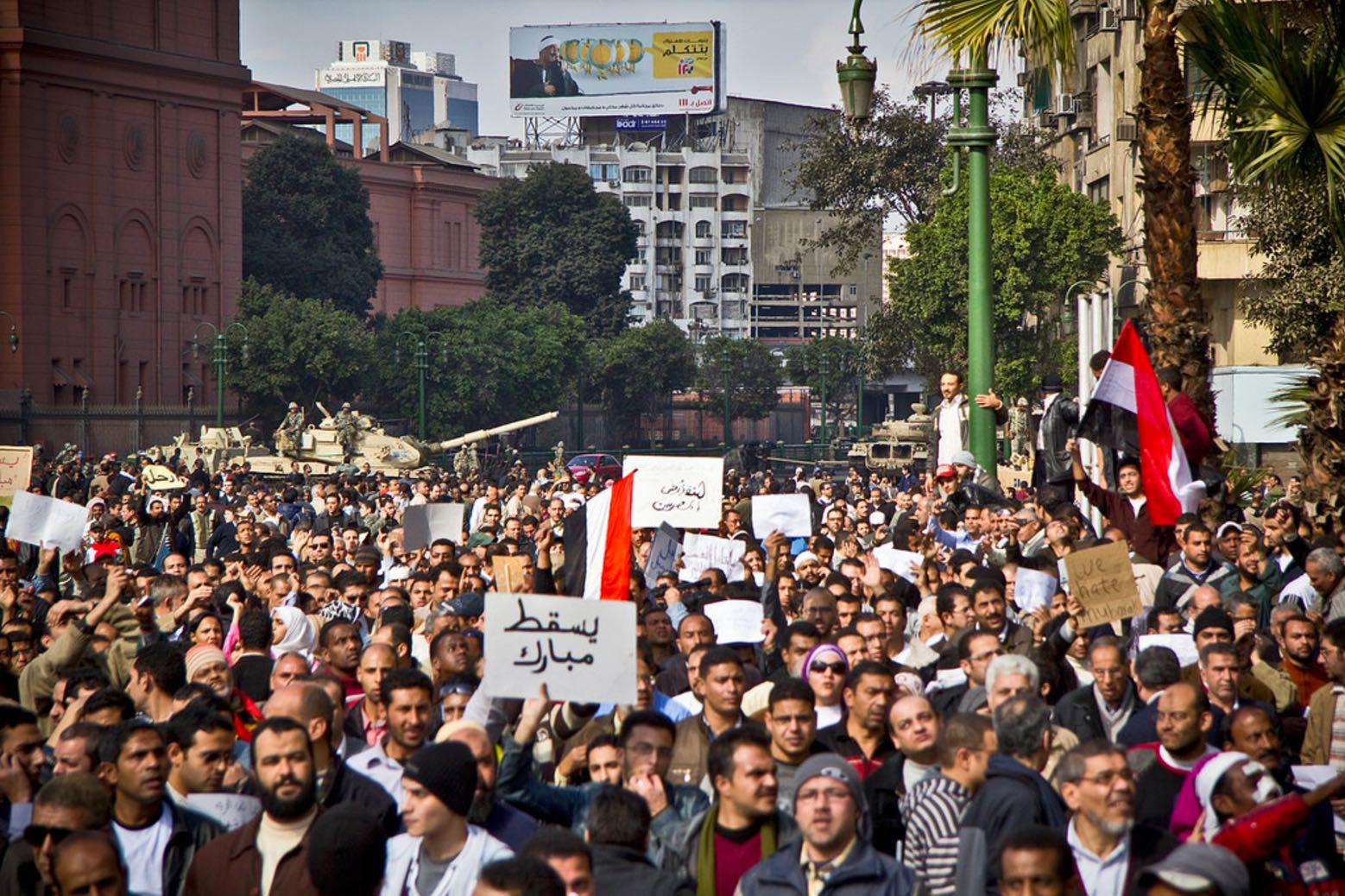The potential — and possible pitfalls — of modern protests
An Egyptian protest in 2011 is shown here.
More than 5 million people around the world took part in the Women’s March. And hundreds of thousands attended the March for Science.
With turnouts like that, you might expect such protests to reflect years of planning and organizational effort. In fact, though, they were organized online in the space of a few months, using tools like hashtags and Facebook events.
Zeynep Tufekci studies what the rise of connectivity means for the efficacy of protests. She’s an associate professor at the University of North Carolina and the author of "Twitter and Teargas: The Power and Fragility of Networked Protest."
Tufekci says that our connected world both helps and hurts protests. She likens a modern protest to a car “and you’re going from zero to 100 in three seconds, but you’re actually building the car at the same time.”
Compare the 1963 March on Washington to the recent Women’s March. Both were huge marches, involved a lot of people and garnered an immense amount of media attention. But the March on Washington was the result of more than a decade of activism, organizing and movement building. The march itself took six months to organize and had to overcome logistical hurdle after logistical hurdle. It was a show of force from a mature and developed protest movement.
The Women’s March, in contrast, was perhaps the first step in movement building. It started as a Facebook post from a first-time activist and went viral from there, in a way that wouldn’t have been conceivable for pre-internet protests.
Tufekci isn’t arguing that the Women’s March didn’t involve a lot of work. But she points out that it didn’t take 10 years of movement building.
In some ways, that might seem empowering for protesters. After all, you no longer need to build a strong organization to demonstrate your beliefs on a large scale. But that also raises issues of its own.
Tufekci says that modern protests don’t have “the kind of network building and organizational building and infrastructure building that you could have had to make if you didn’t have Twitter and Facebook groups.”
And building out a robust organization is important. It lets you do more than just protest in the street. It lets you get out the vote, raise money for candidates and organize boycotts. It shows governments and stakeholders that you’re not just committed to change, you’ll be able to effect change.
Voting, canvassing door-to-door and volunteering, for example, all take larger time- and money-commitments than a single protest.
And if a protest movement’s only recourse is marching, according to Tufekci, that doesn’t usually end very well for the challenging group.
“The power you’re challenging is not sitting on its hand,” Tufekci says, adding, “Your first big march takes them by surprise, and they’re really annoyed. But it doesn’t have the same power the second time because the people in power figure out that this doesn’t have that much teeth.”
Governments may be slow, but they have a lot of resources and they learn fast. Six years after the Arab Spring, Tufekci thinks that governments have figured out that they can’t block information completely. But they can distort the perception of that information by challenging its accuracy, sewing doubt and stirring up distractions.
Tufekci believes that modern protests are both extremely powerful and extraordinarily fragile. And after the protest ends, it’s up to the protesters and their allies to truly effect the change they want.
